Hydroponics is a method of growing plants in water without using soil. There are several techniques in which you can use this mechanism for growing plants. For gardening enthusiasts, this is a sure delight.
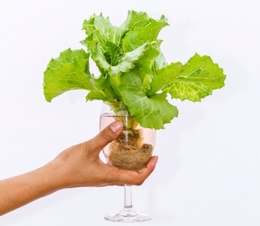
Hydroponics, a term that has been developed from the Greek words 'hydro' (water), and 'ponos' (labor), is a technique of growing plants in water that contains dissolved nutrients, without soil. Plants that grow on land can either be grown in an inert, water-retaining medium like rockwool, gravel, coir, or perlite, or with their roots in a nutrient-rich solution.
How Does Hydroponics Work?
It was in the 19th century that researchers in plant physiology realized that plants had the ability of absorbing nutrients from water as inorganic ions. When plants grow in soil, it is not the soil that is essential for their growth, in fact it only acts as a reservoir for the nutrients. The roots of the plants only absorb the nutrients in the soil when they dissolve in water. Hence, if the nutrients are introduced artificially into the water supply of the plants, they no longer require soil in order to grow. Practically any land-growing plant can be grown with hydroponics, although there are some that thrive better compared to others.
This concept of growing plants without soil has been around since ancient times, with the Aztecs and Babylonians using a form of it. However, the modern method of nutrient solution that is in use these days for hydroponics was developed during the 1800s.
Techniques
Since, this system of growing plants is so easy, a number of methods have been developed over time by gardening enthusiasts. Two of the simplest techniques are the 'ebb and flow' method, and the 'reservoir' method.
Irrespective of the technique that you choose, you will require a 4-liter opaque tubs with lids. The opacity is necessary for keeping the light out from the nutrient solution, which will help in preventing algae from growing in it. In order to kill bacteria, if any, the tubs should first be washed with vinegar, followed by soap and water.
Start by making a growth medium. The seedlings can be placed in a water-retaining medium made of coir, vermiculite, and perlite put in separate planters made of plastic. Two rows of holes should be cut into the lid of the tub, equal in diameter to the size of each planter. Each of these planters should then be placed in each hole. Then the lid, along with the planters, should be fitted onto the tub.
Press F5 to restart the slideshow.
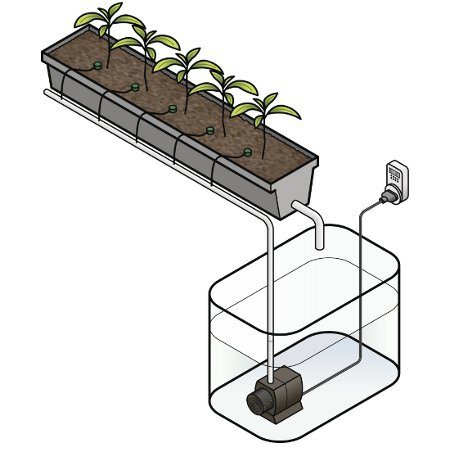
- Illustration of Flow and Ebb Method
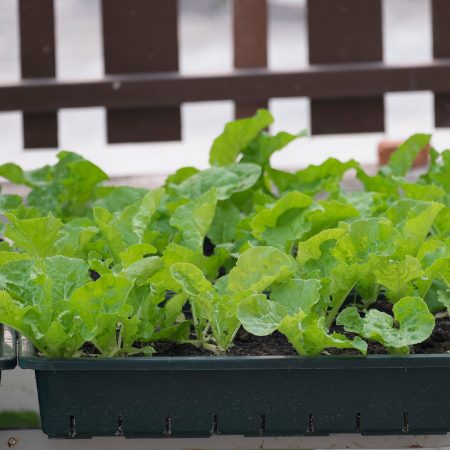
- Flow and Ebb Method
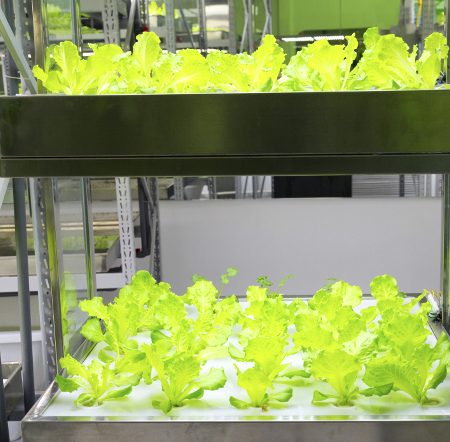
- Reservoir Method in Hydroponics
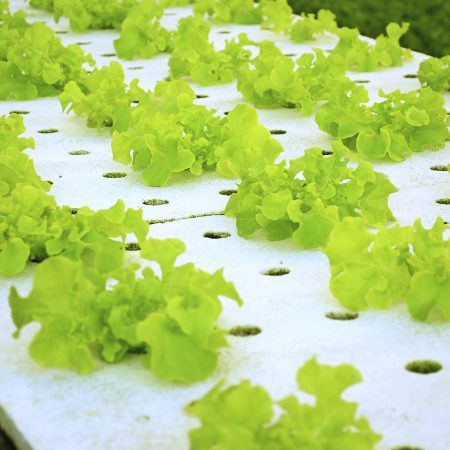
- Hydroponic Reservoir

 The Flow and Ebb Method
The Flow and Ebb Method: You will require a second tub with a lid for this method, which will serve as a reservoir. Holes will have to be cut into sides of each of these tubs, from which a tube for running the water should be fixed from one tub to the other. The connections can be sealed with a waterproof sealant. Basically, this system is based on the principle of gravity. The liquid solution will run from the tub that serves as the reservoir to the one that contains the growing medium, when the former is placed at a higher level, or on the same level as the latter one. When the tub containing the growing medium needs to be drained, the positions of the tubs should be changed. This process should be carried out a number of times in a day.
The Reservoir Method: In this method, instead of the nutrient solution flowing and ebbing from one tub to another, the plants sit in the tub which is filled with the nutrient solution. The roots are provided oxygen by an external air pump, the tubing of which is passed into the bottom of the tub via a hole cut into the lid.
Once the hydration is set up, a system of providing the plants with light will also have to be arranged. Your hydroponics system can be placed on a window that gets sunlight directly, or, in case there is no access to direct sunlight, you can use an artificial lighting system such as a fluorescent lamp or a high intensity discharge (HID) lamp.
In case you do not want to make your own hydroponics system, there are kits available in the market, which come with a growing guide, pH kits, as well as the nutrients. These commercial systems also come in any of the number of techniques that are used.






 Hydroponics, a term that has been developed from the Greek words 'hydro' (water), and 'ponos' (labor), is a technique of growing plants in water that contains dissolved nutrients, without soil. Plants that grow on land can either be grown in an inert, water-retaining medium like rockwool, gravel, coir, or perlite, or with their roots in a nutrient-rich solution.
Hydroponics, a term that has been developed from the Greek words 'hydro' (water), and 'ponos' (labor), is a technique of growing plants in water that contains dissolved nutrients, without soil. Plants that grow on land can either be grown in an inert, water-retaining medium like rockwool, gravel, coir, or perlite, or with their roots in a nutrient-rich solution.




